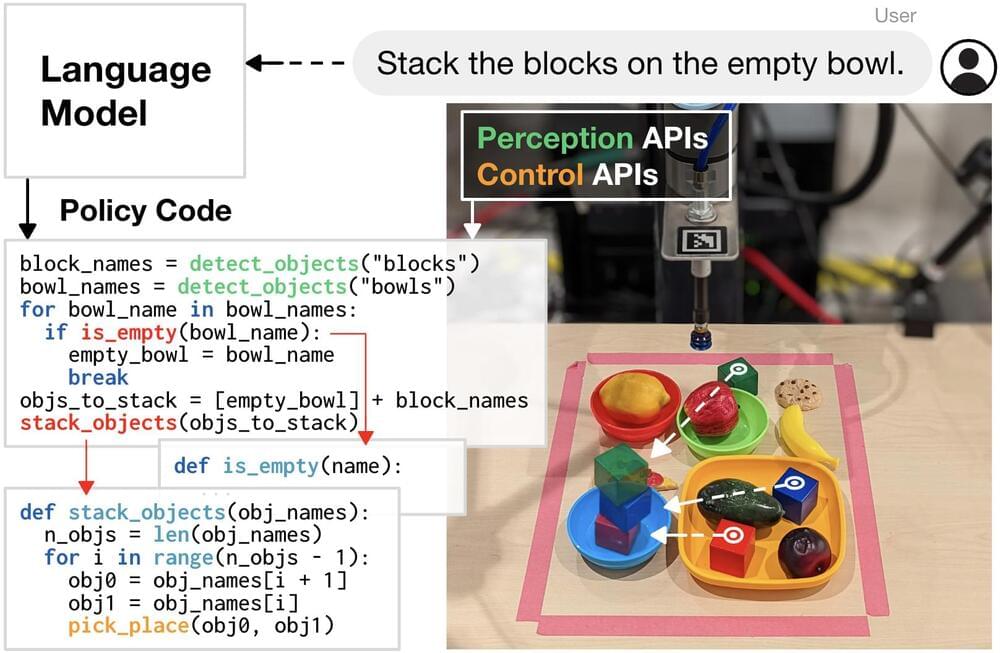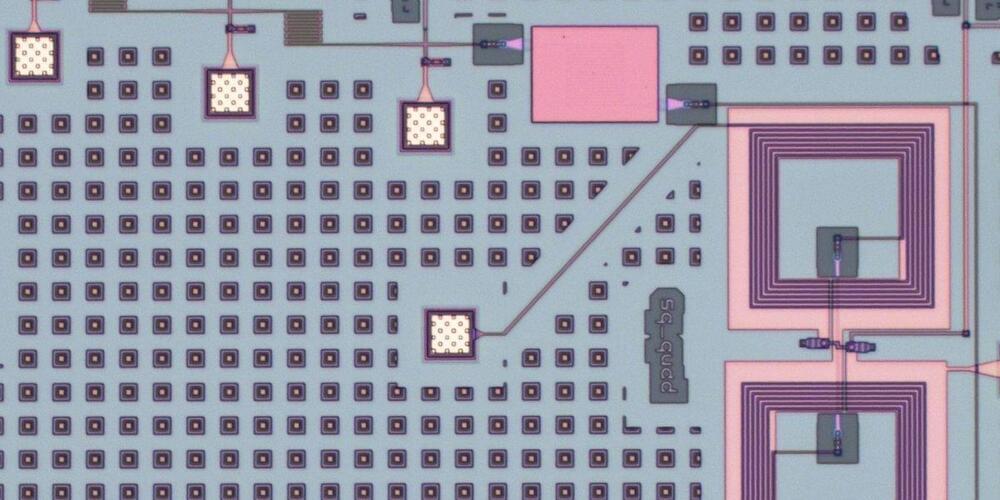Dr. Michael Rose is an evolutionary biologist and authority in gerontology. His many years of research and keen insight establish unique methods to frame the problems of aging. Michael made scientific history with experiments manipulating the life spans of fruit flies. As a pragmatist, Michael sees beyond today’s quick fixes to examine what could be the most important changes in the longevity industry to slow down and stop aging. His view is that genomics in conjunction with machine learning is the future of longevity.
Category: robotics/AI – Page 1,456

Google Just Shut Down It’s Artificial Intelligence After It Revealed This
Thumbnail Inspiration:
https://www.youtube.com/c/DigitalEngine/videos.
Credit:
https://bit.ly/3ggrNND
Many people are scared of artificial intelligence or AI, and it is not hard to see why! The.
advances made in that field of technology are mind-boggling, to say the least! One such scary.
outcome of AI is Google’s AI, which, before it was switched off, ominously revealed one thing.
billions of people have spent a lifetime trying to discover; the purpose of life! What did Google’s.
AI say the purpose of life is? Can AI truly become smarter than us? What does AI becoming.
more intelligent than humans mean? In this video, we dive deep into Google’s Artificial.
Intelligence and what it revealed was the purpose of life before being switched off!
Disclaimer Fair Use:
1. The videos have no negative impact on the original works.
2. The videos we make are used for educational purposes.
3. The videos are transformative in nature.
4. We use only the audio component and tiny pieces of video footage, only if it’s necessary.
DISCLAIMER:
Our channel is purely made for entertainment purposes, based on facts, rumors, and fiction.
Copyright Disclaimer under section 107 of the Copyright Act 1976, allowance is made for “fair use” for purposes such as criticism, comment, news reporting, teaching, scholarship, education, and research. Fair use is a use permitted by copyright statutes that might otherwise be infringing.

Robots That Write Their Own Code
A common approach used to control robots is to program them with code to detect objects, sequencing commands to move actuators, and feedback loops to specify how the robot should perform a task. While these programs can be expressive, re-programming policies for each new task can be time consuming, and requires domain expertise.
What if when given instructions from people, robots could autonomously write their own code to interact with the world? It turns out that the latest generation of language models, such as PaLM, are capable of complex reasoning and have also been trained on millions of lines of code. Given natural language instructions, current language models are highly proficient at writing not only generic code but, as we’ve discovered, code that can control robot actions as well. When provided with several example instructions (formatted as comments) paired with corresponding code (via in-context learning), language models can take in new instructions and autonomously generate new code that re-composes API calls, synthesizes new functions, and expresses feedback loops to assemble new behaviors at runtime.

Nanowire Synapses 30,000x Faster Than Nature’s
Artificial-intelligence systems are increasingly limited by the hardware used to implement them. Now comes a new superconducting photonic circuit that mimics the links between brain cells—burning just 0.3 percent of the energy of its human counterparts while operating some 30,000 times as fast.
In artificial neural networks, components called neurons are fed data and cooperate to solve a problem, such as recognizing faces. The neural net repeatedly adjusts the synapses—the links between its neurons—and determines whether the resulting patterns of behavior are better at finding a solution. Over time, the network discovers which patterns are best at computing results. It then adopts these patterns as defaults, mimicking the process of learning in the human brain.
Will AI Reveal Extraterrestrial Intelligence Far Beyond Our Level of Consciousness?
“Machine learning provides a way of providing almost human-like intuition to huge data sets. One valuable application is for tasks where it’s difficult to write a specific algorithm to search for something—human faces, for instance, or perhaps ” something strange,” wrote astrophysicist and Director of the Penn State University Extraterrestrial Intelligence Center, Jason Wright in an email to The Daily Galaxy. ” In this case, you can train a machine-learning algorithm to recognize certain things you expect to see in a data set,” Wright explains, ” and ask it for things that don’t fit those expectations, or perhaps that match your expectations of a technosignature.
Crowdsourcing Alien Structures
For instance,’ Wright notes, theoretical physicist Paul Davies has suggested crowdsourcing the task of looking for alien structures or artifacts on the Moon by posting imaging data on a site like Zooniverse and looking for anomalies. Some researchers (led by Daniel Angerhausen) have instead trained machine-learning algorithms to recognize common terrain features, and report back things it doesn’t recognize, essentially automating that task. Sure enough, the algorithm can identify real signs of technology on the Moon—like the Apollo landing sites!

Scientists Increasingly Can’t Explain How AI Works
What’s your favorite ice cream flavor? You might say vanilla or chocolate, and if I asked why, you’d probably say it’s because it tastes good. But why does it taste good, and why do you still want to try other flavors sometimes? Rarely do we ever question the basic decisions we make in our everyday lives, but if we did, we might realize that we can’t pinpoint the exact reasons for our preferences, emotions, and desires at any given moment.
Most AI systems are black box models, which are systems that are viewed only in terms of their inputs and outputs. Scientists do not attempt to decipher the “black box,” or the opaque processes that the system undertakes, as long as they receive the outputs they are looking for.
AI Just Got More Creative, and Filmmakers Shouldn’t Be Afraid
Up until recently, artificial intelligence was unable to perform such creative-looking tasks.
But all of that is beginning to change thanks to AI Sketch software like DreamStudio, Dall-E 2, and Stable Diffusion, which take a few keywords via a text interface to generate an image in a process known as “generative AI.”
Generative AI is trained on sets of images, which are sourced from the internet. The machine can then learn the differences between people, places, and things and generate its own images from any text it receives.
The more data sets the AI can draw from, the more accurate and creative the results.
Corridor Digital experimented with Stable Diffusion a few weeks back and used AI to generate images to tell a story. And the results are downright inspiring.
The AI was able to create images with members of the Corridor Crew as the main characters, placing them in custom settings, complete with costumes, props, and backgrounds based on the input of a few main idea terms.

Replit’s Ghostwriter AI can explain programs to you—or help write them
Today, Replit announced Ghostwriter, an AI-powered programming assistant that can make suggestions to make coding easier. It works within Replit’s online development environment and resembles GitHub Copilot’s ability to recognize and compose code in various programming languages to accelerate the development process.
According to Replit, Ghostwriter works by using a large language model trained on millions of lines of publicly available code. This baked-in data allows Ghostwriter to make suggestions based on what you’ve already typed while programming in Replit’s IDE. When you see a suggestion you like, you can “autocomplete” the code by pressing the Tab key.
OpenAI’s Greg Brockman: The Future of LLMs, Foundation & Generative Models (DALL·E 2 & GPT-3)
Greg Brockman, President and Co-Founder of @OpenAI, joins Alexandr Wang, CEO and Founder of Scale, to discuss the role of foundation models like GPT-3 and DALL·E 2 in research and in the enterprise. Foundation models make it possible to replace task-specific models with those that are generalized in nature and can be used for different tasks with minimal fine-tuning.
In January 2021, OpenAI introduced DALL·E, a text-to-image generation program. One year later, it introduced DALL·E 2, which generates more realistic, accurate, lower-latency images with four times greater resolution than its predecessor. At the same time, it released InstructGPT, a large language model (LLM) explicitly designed to follow instructions. InstructGPT makes it practical to leverage the OpenAI API to revise existing content, such as rewriting a paragraph of text or refactoring code.
Before creating OpenAI, Brockman was the CTO of Stripe, which he helped build from four to 250 employees. Watch this talk to learn how foundation models can help businesses benefit from applications that they can create more quickly than with past generations of AI tools.